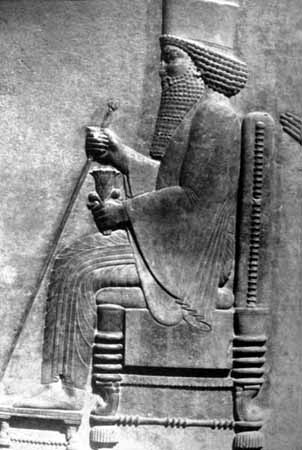
Xerxes (meaning "ruler of heroes" although his real name was Ahasuerus) was king of Persia from 486-465 BCE. He was son of Darius the Great and Atossa, daugher of Cyrus the Great. During his reign he put down uprisings in both Egypt and Babylon, but his efforts to invade Europe were thrown back by Greece in 480. He was assassinated by his chief minister, Artabarus, in 465 and succeeded by his son Artaxerxes I.
Artaxerxes continued building work at Persepolis. It was completed during the reign of Artaxerxes III, around 338 BC. In 334 BC,Alexander the Great defeated the Persian armies of the third Darius. He marched into Iran and, once there, he turned his attention to Persepolis, and that magnificent complex of buildings was burnt down. This act of destruction for revenge of the Acropolis, was surprising from one who prided himself on being a pupil of Aristotle. This was the end of the Persian Empire.
Xerxes's Hall of the 100 Columns is the most impressive building in the complex. It is also the most crowded--a jumble of fallen columns, column heads, and column bases.
The Gate of Xerxes at Perespolis shows that the Winged Lion was placed at the corner of one entrance. When you stood in front of the gate you saw a lion with four legs and when you were inside the gate you also saw a lion with four legs
Gate of Xerxes
Copyright 2002.. Persian Culture.. All rights reserved..
